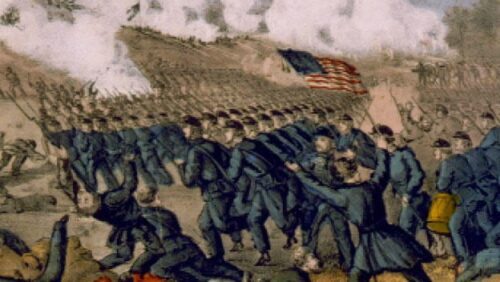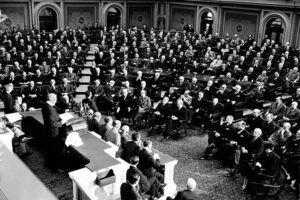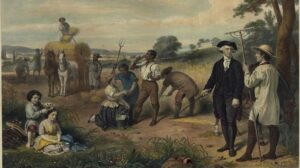
Debacle at Fredericksburg, December, 1862
Riding something of a wave of optimism after the mixed victory at Antietam, Union forces again headed into Northern Virginia and Richmond, the Confederate capital. Under the command of newly-appointed General Ambrose Burnside, the Army of the Potomac began its march in mid-November, and consisted of over 120,000 troops. General Lee, with almost 80,000 troops, waited near Fredericksburg, Virginia, on the west side of the Rappahannock River. Burnside’s approach was slow, and his advance across the river delayed by the late arrival of pontoon bridges, leaving the Union army encamped to the east and north of the river for weeks, their presence and size obvious to Lee’s forces.
By the time Union troops began crossing the river on 11 December, they were in full view of Confederate snipers and other forces. By the time Ambrose ordered the main attacks, on 13 December, Lee and his artillery were firmly entrenched at the top of Marye’s Heights, a mile west of the town, and in other positions in the area. What followed was one of the darkest days of the Civil War, with upwards of 2000 men killed, over 13,000 wounded, and some 2400 captured or missing in total from both sides. Burnside ended the day attempting to lead a final, futile charge across the open terrain between the town and the Heights, perhaps seeking to die with the men he had already ordered to their deaths.
Read about the battle in detail here, and read Ambrose’s oddly anodyne report of the battle, which he wrote on 17 December.



